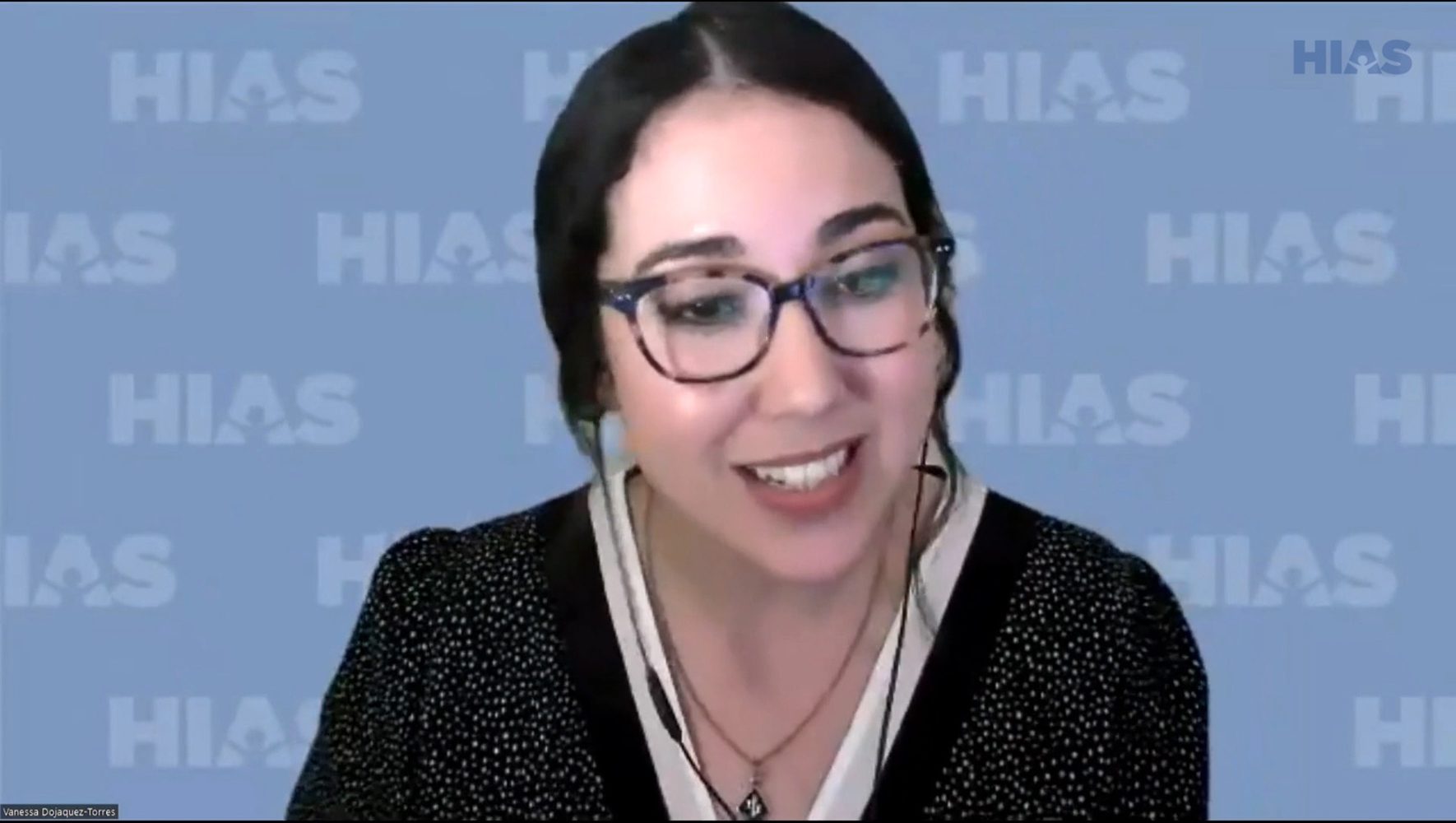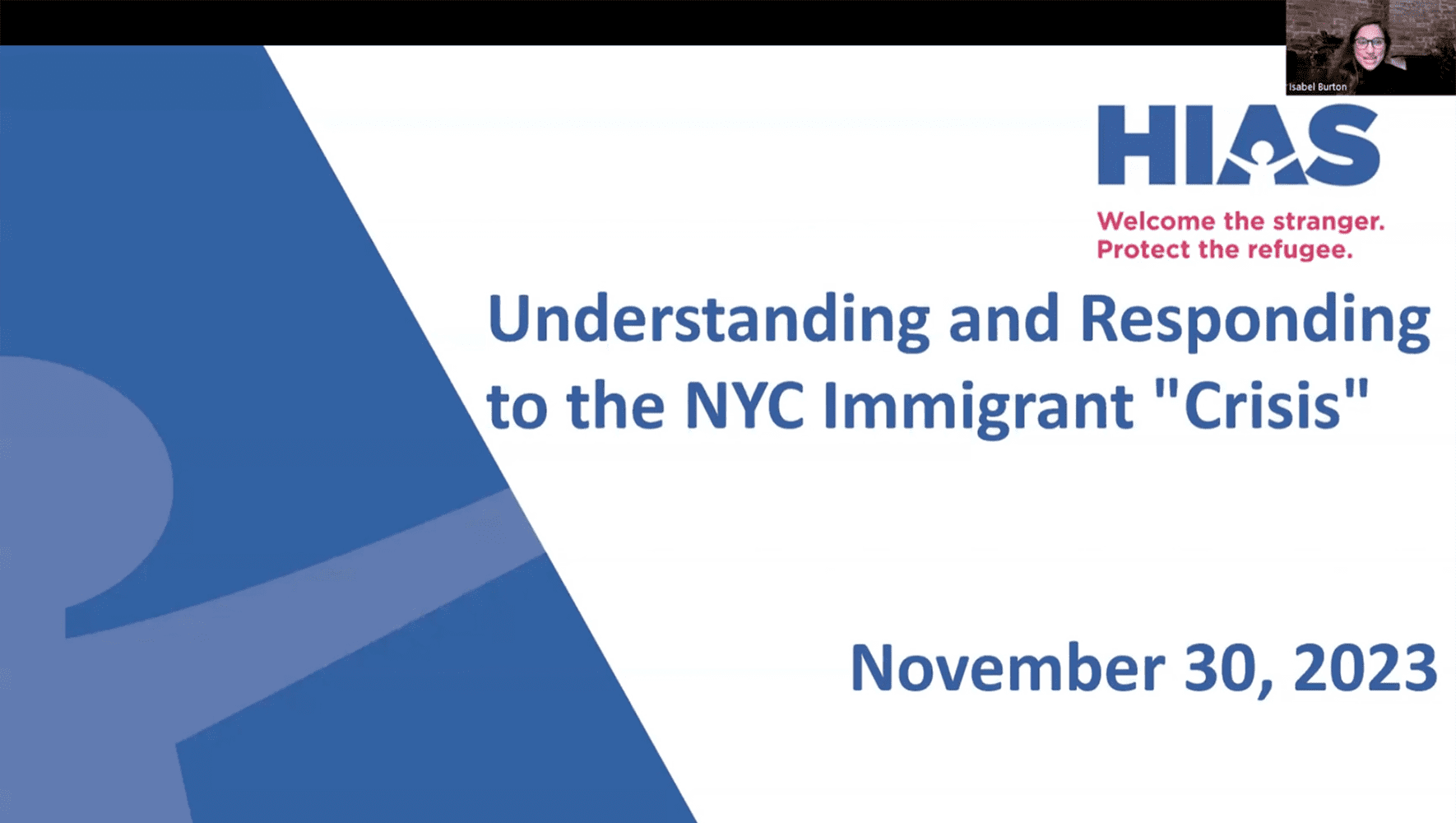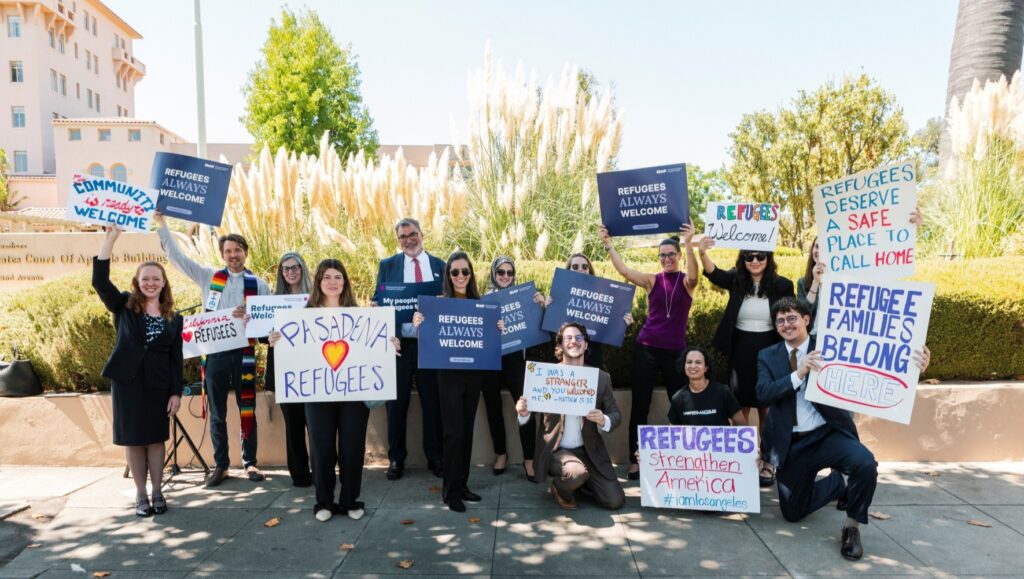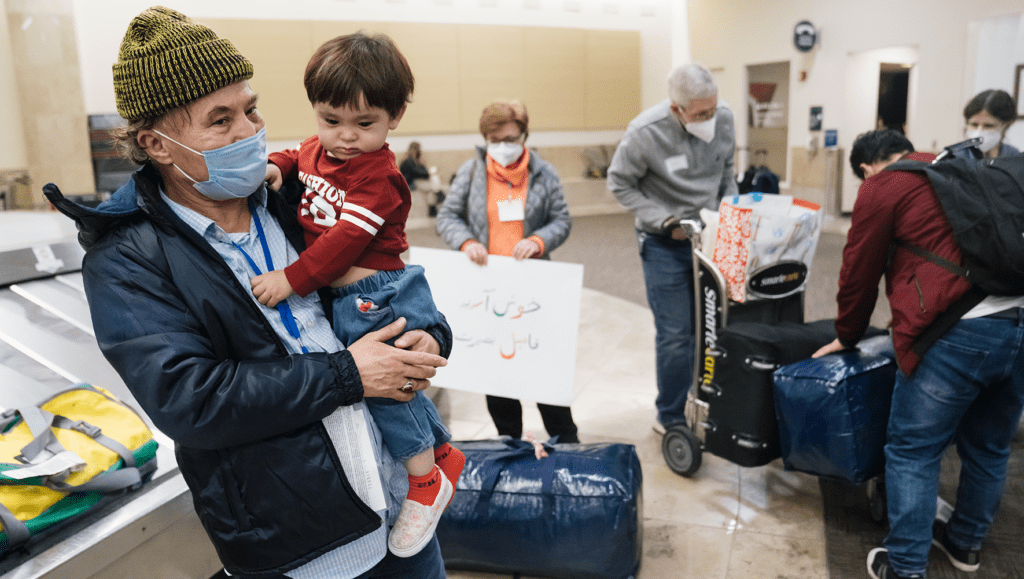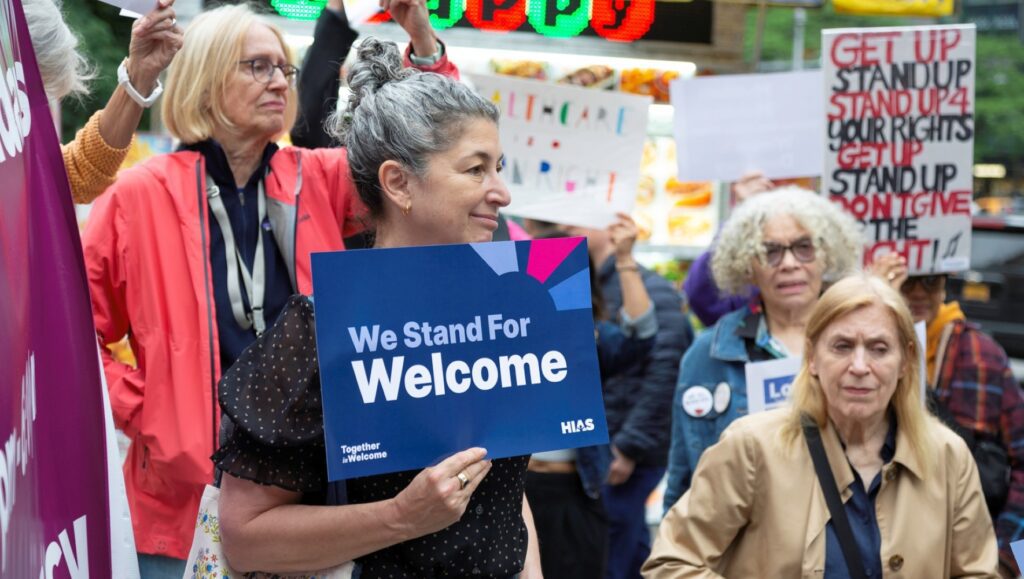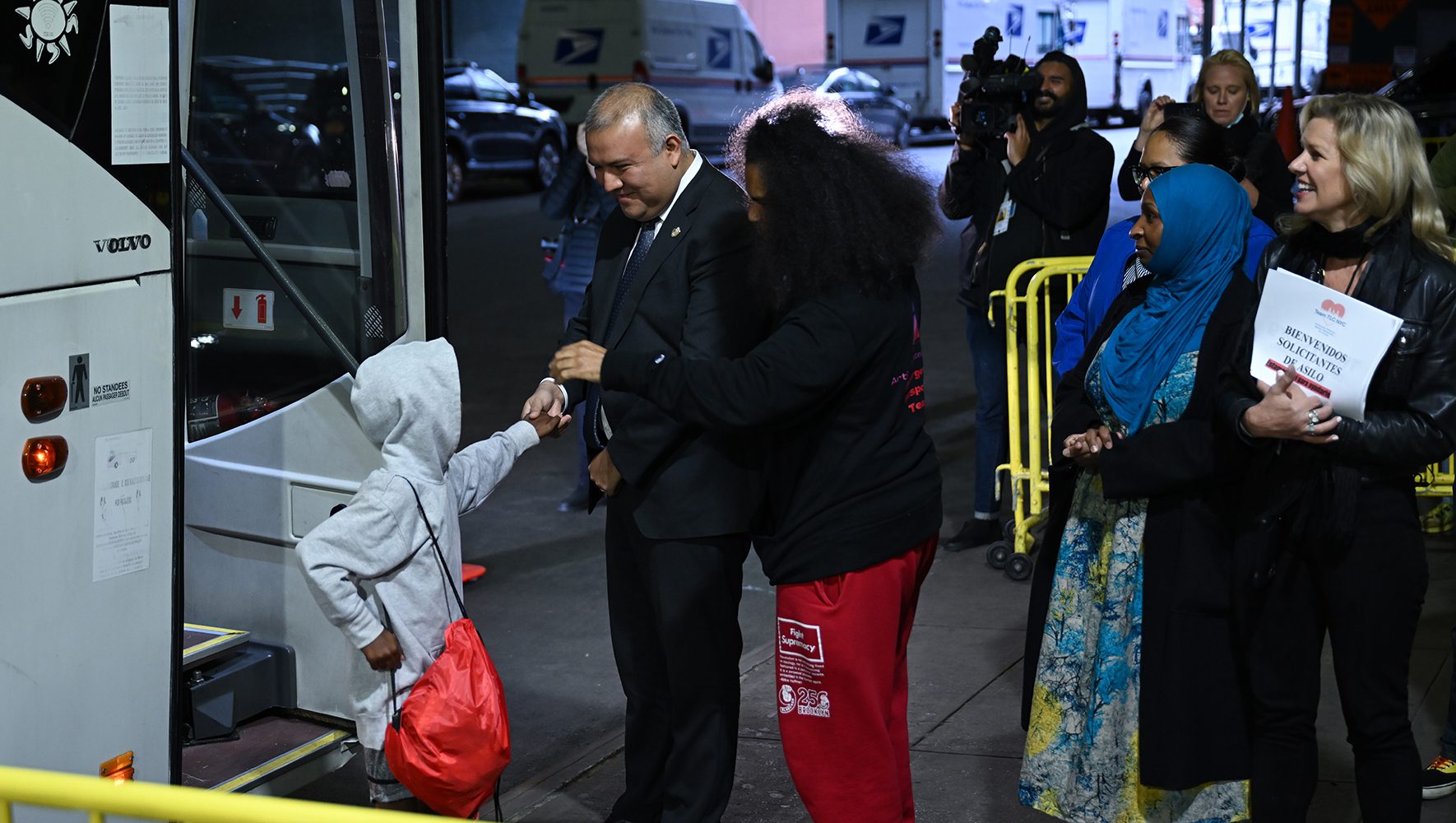
For centuries, New York City has been a beacon for immigrants seeking safety and opportunity in the United States. HIAS, which was founded and originally headquartered in New York and continues to provide vital services to asylum seekers and other immigrants in the city to this day, has witnessed and assisted with the ebb and flow of arrivals over the past 130 years. But new waves of asylum seekers and other immigrants arriving from the U.S.-Mexico border — many sent on buses organized by the governors of Texas, Arizona, and Florida — has conveyed a widespread belief that there is a migrant crisis in New York City.
HIAS experts dispute this premise.
“There is not a migration crisis,” said Vanessa Dojaquez-Torres, HIAS policy counsel, in a recent webinar to discuss the issue and address HIAS’ response. “[The current situation in New York] is naturally what happens when things are intentionally under-resourced and undercoordinated. It wouldn’t be happening with more coordination, resources, and very common-sense solutions.”
When buses of asylum seekers are sent from border cities, it is often without coordinating with local government, NGOs, and mutual aid groups at their destinations. There has not been nearly enough federal coordination in response to the issue.
As of mid-October, there were over 64,000 new arrivals living in New York City shelters. In New York City, “right to shelter” rules require the city to provide temporary emergency housing for asylum seekers — a right that has already been limited to 30 days for single adults and 60 days for families. Thousands of people have already been kicked out of city shelters after exceeding their initial 30 days, and many are now living on the streets. This overcrowding in city shelters exists against the backdrop of a national housing affordability crisis that is even worse in New York City.
“They’re trying to phrase this as an immigration issue, when in reality it’s a housing issue,” said Nathan Gargan, senior staff attorney at HIAS’ New York office. He added that housing is one of the biggest priorities for HIAS’ legal clients, whose cases are made more complicated by a lack of permanent address.
But having stable housing also requires a stable income. Most asylum seekers must wait six months from the time they apply for asylum to the time they receive authorization to work in the United States. Rushing to submit an application and start that clock can put people’s asylum claims in jeopardy if crucial details are left out of the application, said Dojaquez-Torres. These rules can only be changed by an act of Congress, such as the Asylum Seeker Work Authorization Act (H.R. 1325), which would shorten asylum seekers’ wait for employment authorization to 30 days and make that authorization valid until their cases have been fully adjudicated. While the bill was introduced in the house in March 2023, Congress has yet to take further action.
The Biden administration has expedited work authorization for asylum seekers who entered the U.S. after attending appointments they scheduled through the CBP One app. But that only applies to a small subset of those waiting for their asylum hearings in New York. The CBP One app itself has significant flaws, with many asylum seekers unable to schedule appointments due to language barriers, glitches, and other issues.
"They’re trying to phrase this as an immigration issue, when in reality it’s a housing issue."Nathan Gargan, Senior Staff Attorney
HIAS is assisting new arrivals to New York City through its legal services, case management, and volunteer programs. On intake, HIAS lawyers evaluate not only whether arrivals have a strong claim for asylum, but also whether they might be eligible for other forms of immigration relief, such as Temporary Protected Status (TPS) or family-based petitions.
In immigration court proceedings, there’s no right to counsel. Yet asylum seekers who receive legal representation are five times more likely to win their case. These services are extremely labor intensive, according to Gargan, who says that each asylum case takes 40 to 100 hours to prepare. On average, asylum claims take over four years to be decided — but Gargan has represented asylum seekers who have been waiting for over a decade. And while asylum seekers await decisions on their asylum claims, they often need support navigating life in a new country.
“Unlike refugees, asylum seekers are not eligible for the majority of state and federally funded benefits,” said Lilly Sandberg, HIAS’ New York volunteer coordinator. “This lack of support means that direct service organizations have a lot of gaps to fill, and HIAS relies on our community of volunteers and our social service team to offer holistic wraparound support to any of our legal clients who want that support as they go through the asylum process with our legal team.”
HIAS provides free intensive case management to those legal clients who choose to participate – focusing on securing housing, medical and mental health care, food assistance, education, and more. The volunteer program supplements that support through helping them integrate into communities and access the resources that are available to them.
This program has expanded in recent months to meet the growing needs of new waves of arrivals. With volunteer capacity increasing day by day, HIAS has begun offering some services to new arrivals even if they are not legal clients.
Volunteers support new arrivals through mentorship, career counseling and support, assistance finding medical providers and other services, transportation, English language tutoring, and translation and interpretation services. Volunteers also research and create resource guides for services available to asylum seekers in New York and contribute to donation drives for high needs items for legal clients.
The growing volunteer program also coordinates with other organizations working to assist asylum seekers.
“We’re hard at work expanding our network of organizations on the ground here in New York,” said Sandberg. “We’re getting to know some of those partners who are working hard to respond to recent arrivals, both so that they can support HIAS clients with their services but also so that we can train and deploy our volunteers to plug into their work, as well.”
Those looking to get involved in HIAS’ response in New York City can fill out an application; many of the volunteer opportunities available will be filled by those applying on a rolling basis. Those with legal expertise can also sign up to join HIAS’ network of pro bono lawyers providing legal services to asylum seekers.
HIAS continues to advocate for measures that will improve the lives of asylum seekers in New York and beyond, including the Asylum Seeker Work Authorization Act (H.R. 1325). Ask your representatives in Congress to support this legislation that would shorten waiting periods and make it easier for asylum seekers to obtain a work permit and contribute to their communities.
